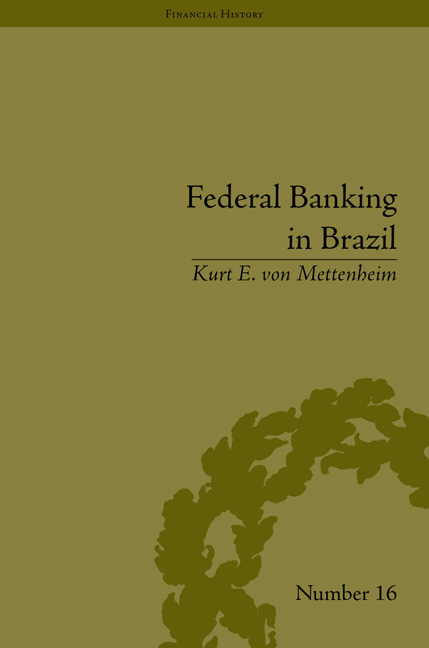Book contents
- Frontmatter
- CONTENTS
- Acknowledgements
- List of Figures and Tables
- Introduction
- 1 Government Banking Theory
- 2 Bank Change in Brazil
- 3 The Banco do Brasil – with Maria Antonieta del Tedesco Lins
- 4 The Caixa Economica Federal (Federal Savings Bank)
- 5 The Banco Nacional de Desenvolvimento Econômico e Social (National Bank for Economic and Social Development, BNDES)
- Conclusion
- Notes
- Works Cited
- Index
1 - Government Banking Theory
- Frontmatter
- CONTENTS
- Acknowledgements
- List of Figures and Tables
- Introduction
- 1 Government Banking Theory
- 2 Bank Change in Brazil
- 3 The Banco do Brasil – with Maria Antonieta del Tedesco Lins
- 4 The Caixa Economica Federal (Federal Savings Bank)
- 5 The Banco Nacional de Desenvolvimento Econômico e Social (National Bank for Economic and Social Development, BNDES)
- Conclusion
- Notes
- Works Cited
- Index
Summary
The Anomaly
This book began when I opened the morning paper in São Paulo on 21 June 2001. Finance Minister Pedro Malan and Central Bank President Arminio Fraga had capitalized Brazilian federal banks to meet Bank for International Settlement (BIS) Basel II Accord guidelines for capital risk. The image of a US-trained economist and advocate of liberalization and privatizations aside a former emerging markets trader at the Soros Fund announcing the capitalization and reform of government banks seemed very odd. Was this another bailout of bureaucrats? Why did reformist President Fernando Henrique Cardoso capitalize rather than privatize these banks after seven years in office, just a year before a decisive campaign to elect his successor? Was this a return to Brazilian statism? Did private banks somehow conspire or acquiesce to keep out foreign competitors (having acquired state government banks and large market shares themselves)? Were Brazilian federal government banks simply too big to fail or too broke to privatize? A mental experiment came to mind. What would a US president do with three big banks? President Henry Jackson's veto of the Second Bank of the US in 1832 made it hard to imagine a US federal bank (I later learned of Abraham Lincoln's advocacy of a National Bank and the US Postal Bank, 1945–8). But the experiment stuck. It seemed impossible that having three big banks under government ownership and control made no difference for policy and political economy.
- Type
- Chapter
- Information
- Federal Banking in BrazilPolicies and Competitive Advantages, pp. 5 - 28Publisher: Pickering & ChattoFirst published in: 2014

